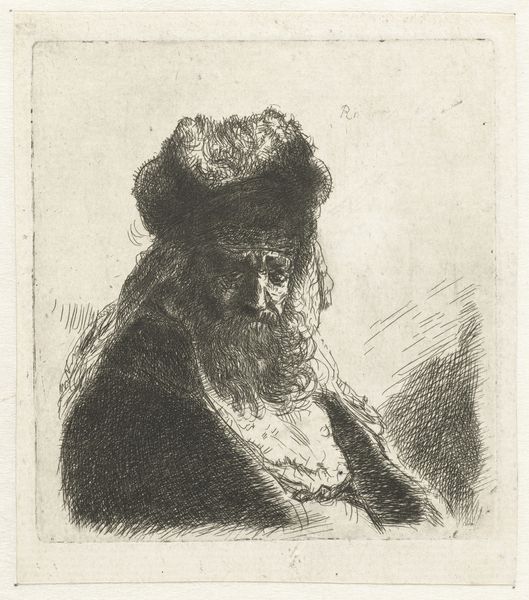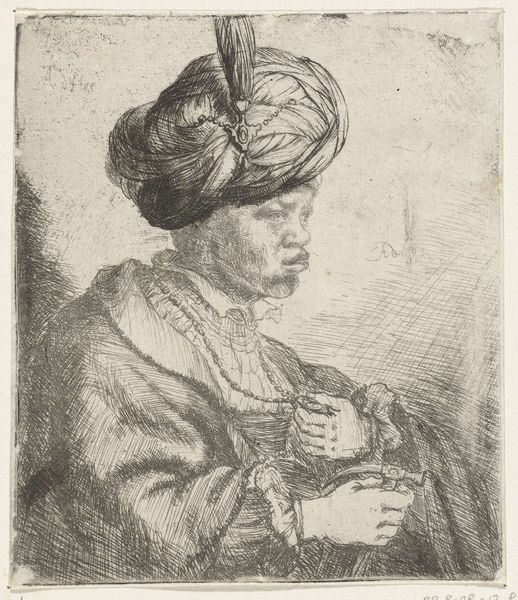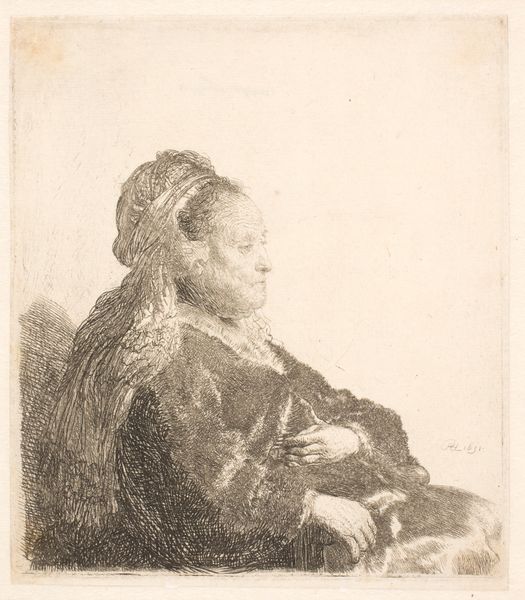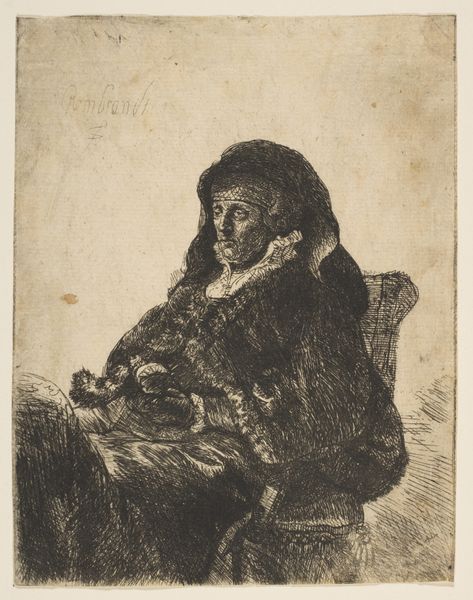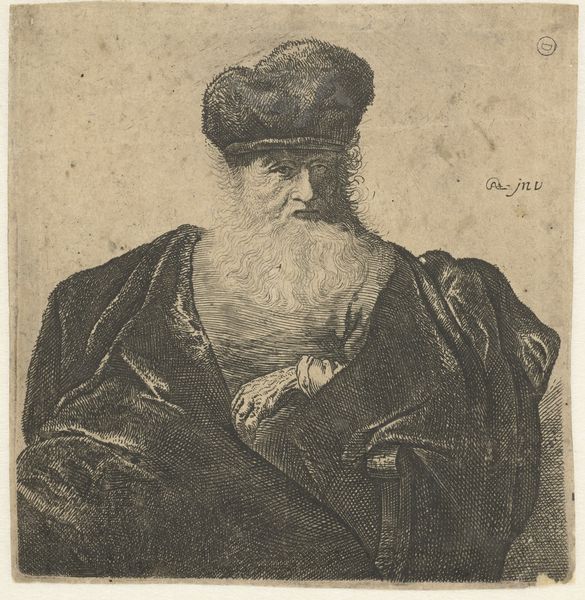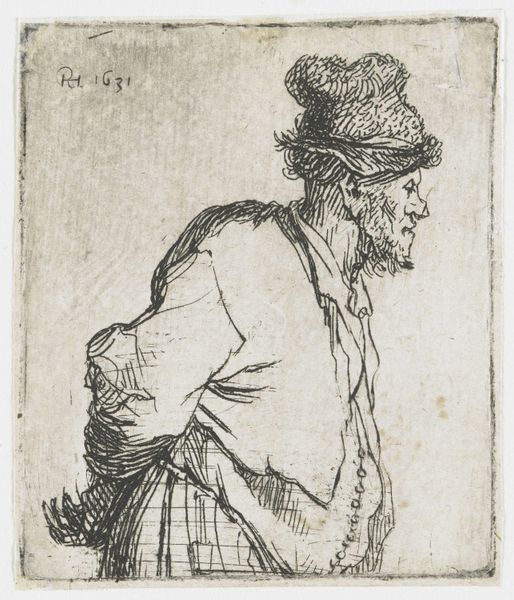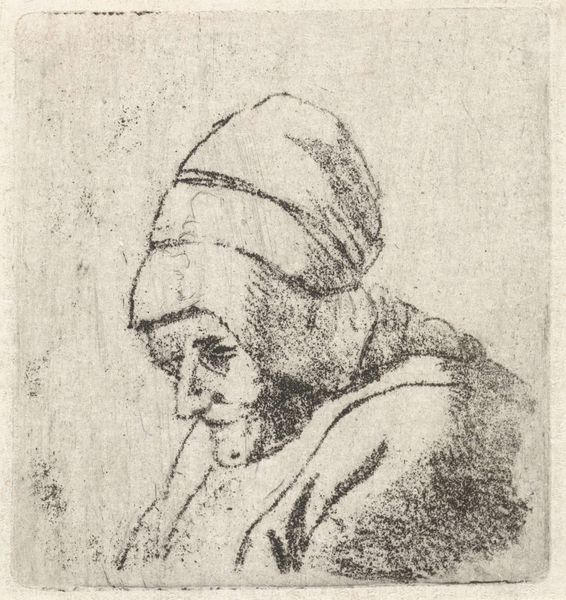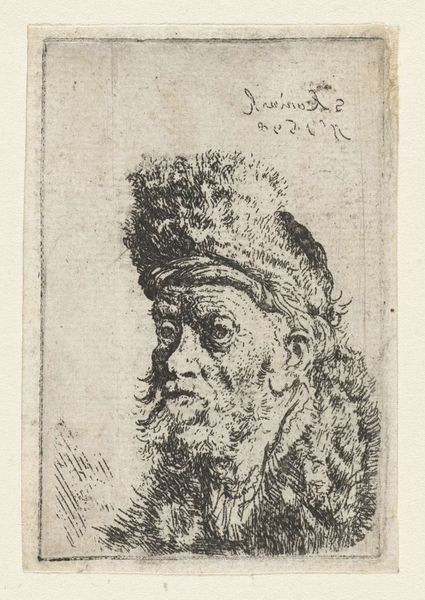
print, etching
#
portrait
#
baroque
# print
#
etching
#
old engraving style
#
genre-painting
Dimensions: height 145 mm, width 123 mm
Copyright: Rijks Museum: Open Domain
Editor: This etching from 1731, "Zittende oude vrouw," by Christian Wilhelm Ernst Dietrich, is quite striking. There's a palpable sense of age and weariness, conveyed so powerfully through a simple print. What can you tell me about the production of this type of work? Curator: Well, etching as a printmaking process allows for relatively mass production. We should consider the role these prints played in disseminating imagery. Was this intended as a stand-alone art object, or something else? Think about who was purchasing and circulating such images. Were they accessible to a wider audience, impacting perceptions and notions of value? Editor: So, it's less about the intrinsic worth of the print itself, and more about its circulation and consumption as a commodity? I mean, it feels pretty unique looking at it. Curator: Exactly. We can also think about the labor involved. From the etcher's painstaking work on the plate to the press operator's labor in producing the prints. Was this a solo effort or part of a larger workshop, each with its own division of labor? Even the paper's production and distribution are crucial to consider. These materials carry their own history. Editor: I hadn't really considered all those steps! Looking closer, I see how the materials themselves, the ink, the paper, the plate, shape the image we're seeing. It is much more industrial than I expected. Curator: Yes! It disrupts traditional art-historical emphasis on the genius of the artist. Instead, we examine the forces and context around making, including labor and modes of distribution. Editor: It's really broadened my perspective. I was so focused on the image, that I forgot about how it actually came to be. Thanks for opening my eyes! Curator: My pleasure! Examining the means of production and distribution opens up new ways of interpreting artworks like these.
Comments
No comments
Be the first to comment and join the conversation on the ultimate creative platform.
